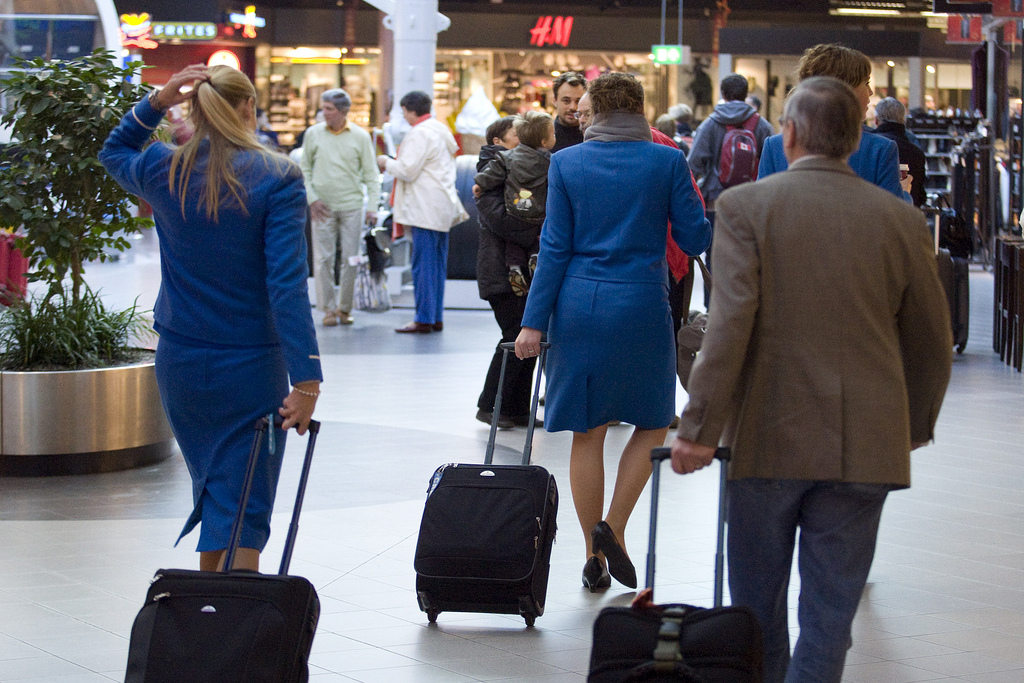
Popular aviation blogger, Ben Schlappig recently wrote a nice post, on his ‘One Mile at a Time‘ blog about meeting an ex-US Airways flight attendant now working for Cathay Pacific. The post shone a light on an interesting aspect of flight attendant working practices that many passengers aren’t remotely aware of – commuting.
For many people, the daily commute might take maybe an hour or so – a simple car or train journey into the office before repeating the same process in reverse at the end of the day. For flight attendants, however, the term ‘commuting’ means something on a totally different scale.
Within Europe, North America and some Asian countries, flight attendants will regularly commute from their home in one country or State to operate a flight leaving from their airline’s base in a totally different country or State.
On occasion you might even catch a glimpse of a commuting flight attendant, already dressed in their uniform, catching some much-needed sleep in a passenger seat onboard a plane before or after a work flight.
Of course, the practice isn’t without logistical problems – ‘commuters’ as they’re referred to within the industry have to make sure they get to base with plenty of time to spare. Any delays or cancellations will see them offloaded from their trip and possible disciplinary action taken against them.
And then there’s the issue of standby blocks – where flight attendants have to report for work within around 2-4 hours of being called by the airline. On those occasions, they’ll be forced to make the commute and stay in a hotel (or a friends house) at their own expense.
For the most part, airlines tolerate commuting flight attendants – they allow them to travel in uniform and some even negotiate special hotel rates. After last years hurricane in Houston, the union which represents American Airlines flight attendants secured protection for commuters who couldn’t get to work.
Of course, what makes this possible more than anything else is the generous concessionary travel flight attendants benefit from – up to 90% discount in some cases. For some, this can mean being able to live in a relatively cheap country or city while earning a better wage than if they were employed locally.
Clearly, this way of living suits long-haul flight attendants more than their short haul colleagues – while the commute might be long, they only have to do it maybe 3-4 times a month.
But not all airlines encourage commuting – such practices are strictly forbidden by Middle East carriers. At airlines including Emirates and Etihad, cabin crew have to be back in the country from a trip abroad within a set time before their next flight. At Qatar Airways, crew members must stay in their accommodation during what is referred to as a ‘rest day’ – leaving the house could even result in dismissal.
Photo Credit: Jos @ FPS-Groningen via Flickr
Mateusz Maszczynski honed his skills as an international flight attendant at the most prominent airline in the Middle East and has been flying ever since... most recently for a well known European airline. Matt is passionate about the aviation industry and has become an expert in passenger experience and human-centric stories. Always keeping an ear close to the ground, Matt's industry insights, analysis and news coverage is frequently relied upon by some of the biggest names in journalism.







